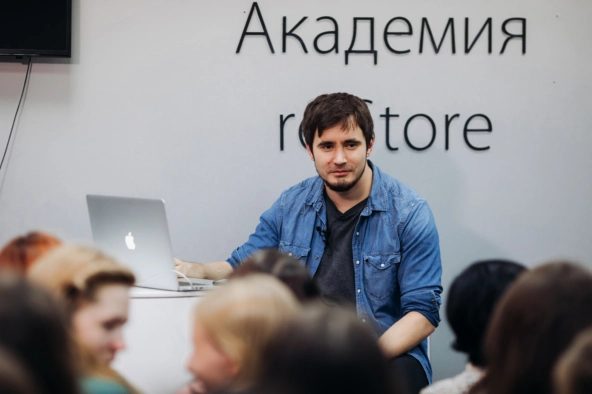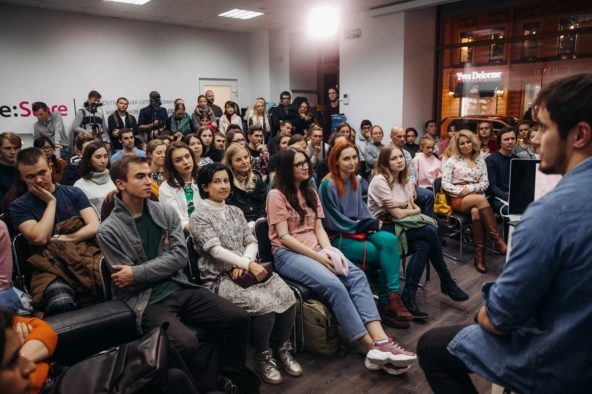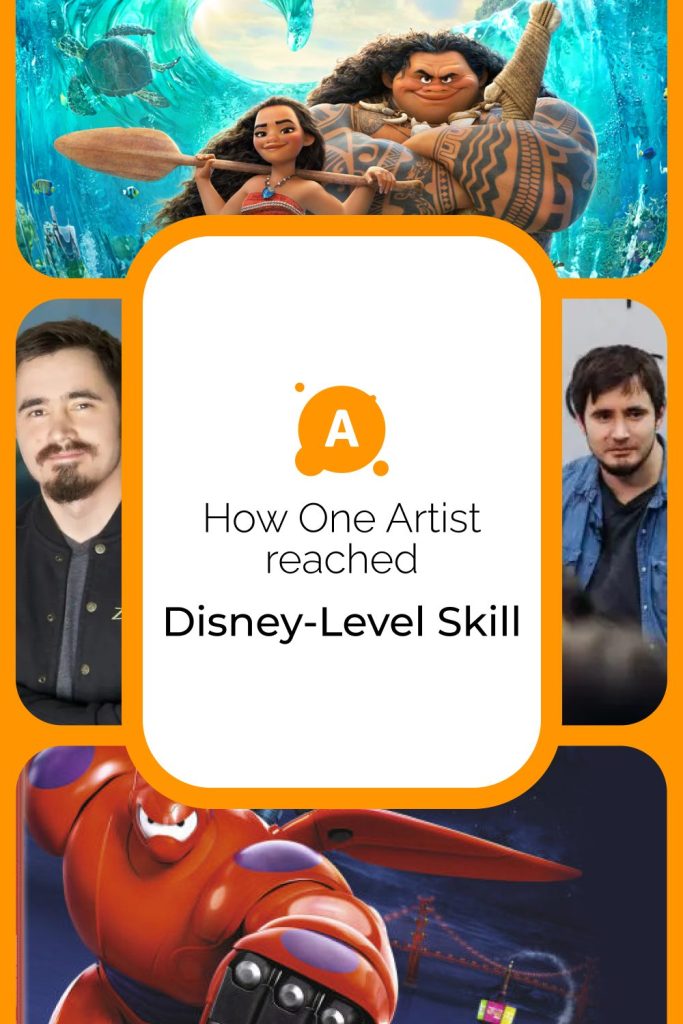He Just Packed His Bags and Left
Marat Davletshin used to sketch strangers on the subway in Saint Petersburg. Now he works at Disney. Yeah, that Disney — Zootopia, Moana, Frozen. The characters you love? He helped bring them to life.
And no, he didn’t just get lucky. He dropped everything. First, moved from St. Pete to Moscow. Then straight to the U.S. — Pittsburgh, then San Francisco. No plan. No backup. Just one mission: learn from the best. That’s how he landed at Pixar, learning directly from the masters. They ripped his work apart, helped him build a killer demo reel — the kind that made Disney say, “You’re hired.”

Paraphrased from Marat’s interviews:
“I was moving from city to city with no clear idea of what would happen next. I just knew I needed to be where the best people were. I left Saint Petersburg for Moscow. Later, I moved from Pittsburgh to San Francisco. I didn’t even know what exactly I was going into — I just knew I had to learn.”
Animation Isn’t Just About Cartoons
Forget what most think animation is. It’s not just fun characters and funny voices. It’s emotion, psychology, and truth. It’s noticing how someone sips coffee when they’re nervous, how a fake smile fades just a second too fast. That’s what makes a character real.
Marat’s approach is simple: observe the world.
Draw it. Capture it. He’s filled entire sketchbooks with messy, rapid-fire drawings of people in cafés, parks, and subways, not for beauty but for honesty.

Paraphrased from Marat’s lectures:
“Observation is everything. That’s what allows you to create believable animation that the audience can connect with. A caricature often looks more like the person than the person themselves. It reveals something deeper — and that’s what we aim for in animation.”
Life Drawing Exercise:
- Make time: Whether you are taking a class, out in a park or subway, or using an online image study service like Line-Of-Action, you need to make time to practice. Start with 5 to 10 minutes of practice to get used to being in your sketchbook more often. Then increase the amount of time you spend from there by an hour. The more you get used to drawing people all the time, the more expressive your work will become.
- Be Fluid: Quickly jot the figure down, don’t focus on getting things just right, and focus on “feeling the figure out.” Get used to drawing with your elbow, not your wrist. This will take the pressure off your arm and help you get more organic shapes and expressiveness in your drawing.
- Observe: Instead of drawing what you believe you should see, draw what you see. Drawing symbolically is a mistake that many beginner drawers make. For instance, when drawing a face, they could draw an eye symbol (think of the emoji image of an eye) instead of the lines, shadows, creases, etc. that are directly in front of them.
- Include hands and feet: Don’t forget to include hands and feet; you’d be surprised at how frequently you see them left out, but think about how much personality each one has. They are compositions in and of themselves because of their incredibly varied and intricate forms. Without hands and Feet, your art would lack the expressive power they provide.
- Learn from other artists: Take time to see how others have done their life drawings. If there is a group close to where you live, it is simple to see what the local artists are up to, or there is a vast collection of historical and modern life drawings that is easily accessible online.
Accountability: Whether you set an alarm to remind yourself to draw, or have a group of friends or fellow artists who get together and focus on figure drawing, it’s good to have something outside of yourself to keep you consistent. Join our Discord, where we run Free Figure Drawing Studies every week.
Truth Is the Secret Ingredient
Great animation isn’t about technical perfection. It’s about truth. Not realism — but emotional truth. The kind that makes the audience say, «That’s exactly how I felt when that happened to me».
Marat explains that truth in animation exists in layers. First is the truth of nature — how things physically move. Then, the truth of recognition — when people see themselves or someone they know. And finally, the truth of emotion — something deeply personal. Understanding and incorporating these layers of truth into your work can elevate your animation from technically proficient to emotionally resonant.

You Won’t Make It Alone
Here’s the Truth: You Can’t Reach the Pinnacle Alone. Marat Had Mentors. You Need Them Too.
Paraphrased from interviews:
“You can get pretty far on your own. But if you want to go beyond that — really grow — you need a teacher. Someone who sees more than you can.”
That kind of growth doesn’t happen in a vacuum. It happens when you put yourself in a room with people who challenge you, raise the bar, and make you uncomfortable in the best possible way.
If you are unsure where to find a mentor, consider joining our Intensive One-Month Mentorship course. This course is designed to provide you with the guidance, feedback, and support you need to finally get your animated project or portfolio off the ground and into the limelight. It’s a unique opportunity to learn from experienced professionals, receive personalized feedback, and make significant progress in a short amount of time.
Start Now. No Excuses.
If you’re still reading this, you already feel it. That itch. That voice that says, This could be me. So don’t sit on it. Do something.
Start learning from real pros. Get honest feedback. Build work that actually matters. Our courses are built for people like you — hungry, focused, ready to dive in.
Interpretation based on Marat’s story:
“Find the best people you can and go learn from them. Drop everything if you have to. I did. And I’d do it again.”
Maybe one day we’ll write an article about your journey.
But you’ve got to start it first. Let’s go.


